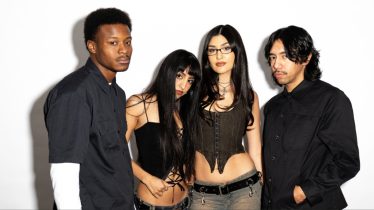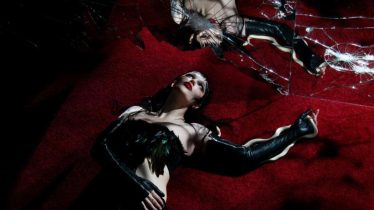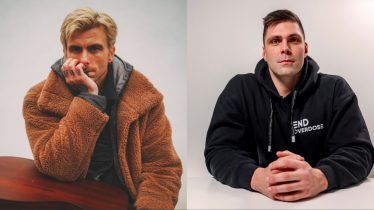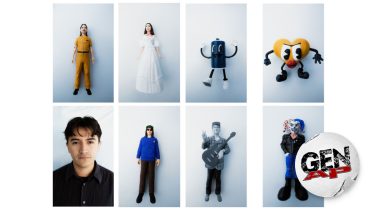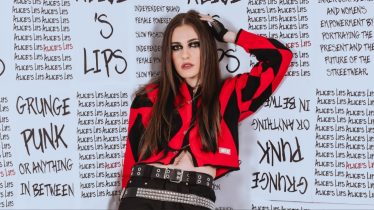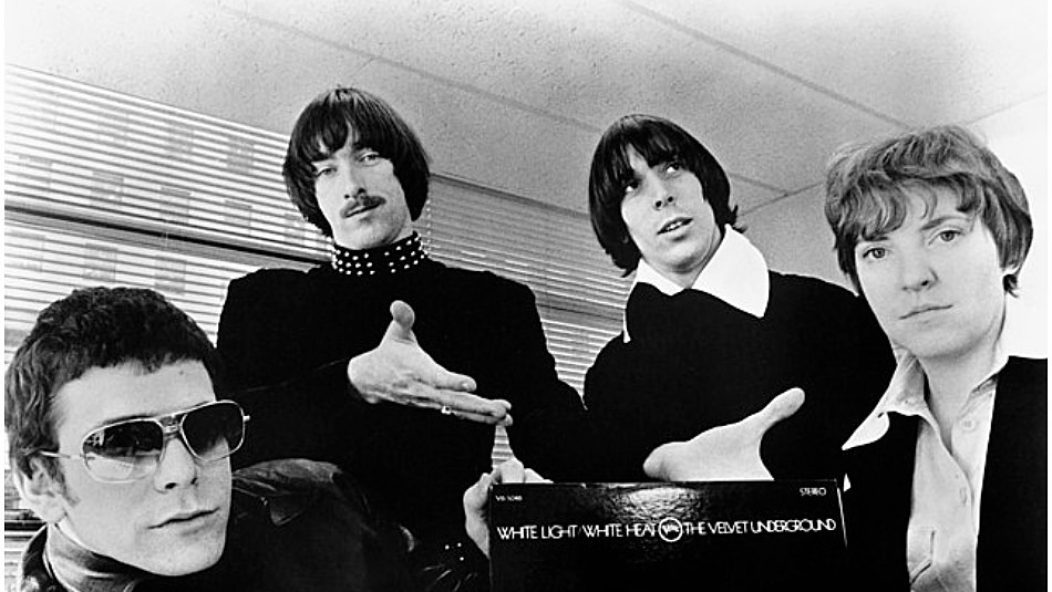
15 artists who show that the Velvet Underground’s influence is eternal
Lester Bangs, the greatest rock journalist ever, felt eternal Lower East Side musical royals the Velvet Underground were “our Beatles and Bob Dylan combined” and that “modern music begins” with them. He wasn’t wrong. They existed only for a handful of years—1965 to 1970. But five years was enough for them to create virtually everything Alternative Press covers. Punk? Noise? Indie? You name it: The Velvets are somewhere in its DNA.
Read more: 10 punk guitarists who took a unique approach to the genre in the ’10s
They were too cool to talk to you, all black leather and shades after dark. Ill-tempered, they were not here to entertain. They came to assault you and your values, musical or otherwise. Their manager was deeply polarizing pop artist Andy Warhol, who seemingly absorbed them into his entourage of drug users, transsexuals, queers and displaced socialites. Leader Lou Reed was a classic pop songwriter who could have had an office in the Brill Building.
His office instead appeared to be in the gutter. Drugs (“Heroin”), sadomasochism (“Venus In Furs”), more drugs (“I’m Waiting For The Man”), death (“The Black Angel’s Death Song”), alienation (“European Son”) and possibly more drugs (“Run Run Run”)—this is just the subject matter of the first LP alone. Most pulsed to a rumbling rock ‘n’ roll propelled by drummer Maureen “Moe” Tucker’s standing, minimalist pounding. All were lashed with the dissonance shriek and roar of Reed and Sterling Morrison’s guitars, and the classically trained John Cale’s electric viola, which he scraped when not being the VU’s bass guitarist.
Read more: 10 glam-rock artists from the 1970s who heralded the coming age of punk
The Velvet Underground & Nico also contained tender ballads of great beauty—“Sunday Morning,” “All Tomorrow’s Parties,” “Femme Fatale.” All chimed like a gothic cathedral. Future albums concentrated on other aspects of VU-ness: White Light/White Heat’s whiplash, noisy fuzz-punk, The Velvet Underground’s downbeat pop. All the while, Reed told people what they didn’t want to hear, in the language of great literature or poetry.
The Velvets’ influence far outstripped its paltry record sales. Yet, everyone who listened became some of the most important musicians of their time. The Velvets and Reed even inspired Czechoslovakia’s Velvet Revolution. The Czech Republic’s first president, former dissident and playwright Václav Havel, informed Reed during a visit that a bootleg volume of his song lyrics sustained and inspired him. The VU inspired real and sonic revolutions. Not every rock band can claim that. Here are 15 of the Velvet Underground’s greatest musical disciples.
David Bowie
Best heard on: Hunky Dory
David Bowie was a one-man Velvets/Reed fan club. The earliest artist to cover them, no one did more to spread the gospel of the Velvet Underground. Upon returning from a brief New York business trip in November 1966, then-manager Kenneth Pitt gifted Bowie with an acetate of The Velvet Underground & Nico, personally handed to him by Warhol during a visit to the Factory.
“I literally went into a band rehearsal [then his mod outfit, the Buzz] the day after I heard the record, put down the album and said, ‘We’re gonna learn this song,’” Bowie later recalled. “I’m Waiting For The Man” followed him into his live sets through the Spiders From Mars and beyond, alongside “White Light/White Heat,” and his own Velvets’ mojo-aping originals such as “Queen Bitch.” He continually name-checked them and Reed in interviews until his 2016 death, and he pushed such Velvets songs as “Sweet Jane” onto such acts he produced as Mott The Hoople.
His ultimate act of cheerleading: co-producing, alongside his brilliant guitarist Mick Ronson, Reed’s single best solo album. The glamtastic Transformer featured such deathless tunes as “Vicious,” “Perfect Day” and sole hit single, “Walk On The Wild Side.”
Jonathan Richman And The Modern Lovers
Best heard on: The Modern Lovers
Then you have Jonathan Richman, a misfit among misfits in the late ‘60s. A Massachusetts born-and-bred son of a traveling salesman, and a real-life Archie Andrews, he found solace in the drugs and degeneracy-soaked noise fests of the Velvet Underground. He’d pester them, especially his hero Reed, every time they played Boston, eventually moving to NYC to be near them. When he finally formed his own band, the Modern Lovers, they oozed a motor-drive version of Velvetsism.
The original Modern Lovers’ sole studio LP, produced by Cale as a demo and unreleased until the dawn of punk, brimmed with Richman’s wide-eyed, minimalist, Reed-inspired compositions. Indestructible classic “Roadrunner,” covered by everyone from the Sex Pistols to Joan Jett, borrowed the “Sister Ray” riff for an ode to driving down dark midnight highways with the radio blasting. Other songs, such as “She Cracked” and “Hospital,” traded in Reed’s heavy subject matter, both seemingly about a young woman undergoing a nervous breakdown.
The music he made in these times seemingly disturbed Richman, who went increasingly in a deliberately childlike direction heavily influenced by ‘50s rock ‘n’ roll. His 1992 solo album, I, Jonathan, featured a heartfelt tribute to his idols, “Velvet Underground”: “Rock ‘n’ roll, but not like the rest/And to me, America at its best/How in the world were they making that sound?/Velvet Underground.”
Brian Eno
Best heard on: Here Come The Warm Jets
On March 19, 1982, avant-rock boffin Brian Eno gave music journalist Kristine McKenna an interview that ran four days later in the Los Angeles Times and has been endlessly misquoted since. Here’s what he actually said: “My reputation is far bigger than my sales. I was talking to Lou Reed the other day, and he said that the first Velvet Underground record only sold 30,000 copies in its first five years. Yet, that was an enormously important record for so many people.
I think everyone who bought those 30,000 copies started a band! So I console myself in thinking that some things generate their rewards in second-hand ways.” What the Velvets passed on to the future U2/Bowie/Talking Heads producer was the misguided notion of non-musicianship—the Velvets were all beyond-competent musicians. But this enabled him to be Roxy Music’s original synthesizer player without having any keyboard experience, to play non-guitar on his early Velvets-drenched solo albums such as Here Come The Warm Jets and generally learn on the job in all of his early musical endeavors. Punk would certainly take his notions to heart.
New York Dolls
Best heard on: New York Dolls
If the Velvets were The New York Band Of The ‘60s, then the New York Dolls served as their ‘70s successors. Noisy, trashy, basic rock ‘n’ roll that resembled the subway’s roar? Check. Gritty, highly urban songs dealing with drugs, urban decay and kinky/ambiguous sexuality? You got it. Think they owned a VU album or two? The Dolls became the darlings of the last venue the Velvets played, Max’s Kansas City, where the Warhol entourage ruled the roost. Reed sniffed that they were “cute,” early on. Then he turned around and refused to let them open some of his British shows. Curious, that one.
Patti Smith
Best heard on: Horses
When Patti Smith moved to the city and hooked up with then-boyfriend Robert Mapplethorpe, the two made nightly pests of themselves in the Max’s backroom, Smith bugging Warhol and his retinue to listen to her poetry. When those poems became rock ‘n’ roll songs, she benefited from the Velvets’ mix of the sacred and the profane, their tense urban minimalism and Reed’s infusion of gritty literary reportage into his compositions. Cale produced her debut album, Horses. Reed’s then-unreleased Velvets tune “We’re Gonna Have A Real Good Time Together,” later cut for his solo Street Hassle album, became a staple of Smith’s live sets for a time, an expression of unbridled joy in her hands.
Richard Hell And The Voidoids
Best heard on: Blank Generation
NYC’s other great punk poet, Richard Hell, was a natural-born son of the Velvets. Tough, metropolitan subject matter, handled in a literary fashion? A basic, chugging rock ‘n’ roll sound that’s equal parts back-to-basics and avant-garde atonality? A tattered, charismatic figure front and center who is hardly your typical rock badass? Yep, Hell ticks off all those boxes. But he had a secret weapon in the Velvets-alike-stakes: guitarist Robert Quine, who painted broad swathes of dissonance across Hell’s masterly songs.
Quine based his skronky guitar work on Reed’s vicious six-string hackings in the VU and even recorded some highly prized tapes of a series of 1969 performances by them in San Francisco. Quine would later be Reed’s lead guitarist in the ‘80s.
Joy Division
Best heard on: Unknown Pleasures
The Velvets’ influence on English punk doesn’t seem as prevalent as it was on the New York scene. If it filtered through, it was via Bowie’s VU fandom—some Britpunks would cover Bowie’s arrangements of songs such as “I’m Waiting For My Man.” One band who seemed to take more direct inspiration from the Velvets was Joy Division.
Those chugging rhythms, occasionally angular guitars, downbeat atmosphere and difficult subject matter—especially writing about mental illness, as on “She’s Lost Control”—could be the ultra-noisy White Light/White Heat album given the eponymous third album’s muffled mix. And final single “Love Will Tear Us Apart” is so Velvet Underground that it just put on sunglasses and a black T-shirt and went downtown to score smack and hang out at the Factory.
R.E.M.
Best heard on: Murmur
When R.E.M. arrived with 1981’s brilliant, murky debut single “Radio Free Europe,” the nascent U.S. indie-rock scene met its greatest contribution to the ‘80s. The band achieved it with a precise mix of the Velvets’ impenetrability and locomotive pulse with the Byrds’ jangling guitar atmospherics. Mind you, guitarist Peter Buck could have learned those strummy six-string patterns as much from “Pale Blue Eyes” as from “Turn! Turn! Turn!” As their 31-year career unspooled, R.E.M. paid direct homage to the VU occasionally, recording renditions such as “There She Goes Again” for B-sides.
The Dream Syndicate
Best heard on: The Days Of Wine And Roses
The first time many heard “Tell Me When It’s Over,” from Los Angeles Paisley Underground luminaries the Dream Syndicate’s debut album, The Days Of Wine And Roses, many thought it was a newly discovered Velvet Underground outtake. For one thing, the band’s name was derived from a pre-Velvets outfit Cale had been in. Then there was the White Light/White Heat cut-and-thrust of their sound, especially the general wash of fuzz across every surface and lead guitarist Karl Precoda’s howling feedback solos. Then you had leader Steve Wynn’s very Reedian songwriting and vocals. They made it their own, but the Dream Syndicate channeled the Velvet Underground better than anyone.
Violent Femmes
Best heard on: Violent Femmes
Violent Femmes seemed as much the second coming of the Modern Lovers as Velvet Underground avatars when their 1983 self-titled debut album arrived. Blame it on Gordon Gano’s songwriting, infused with Richman’s studied adolescent innocence post-1975, albeit perverted by Reed’s cynicism. Their largely acoustic format, including Brian Ritchie’s unplugged mariachi bass work, added to the Rock ‘n’ Roll With The Modern Lovers feel. But Victor DeLorenzo’s stand-up drumming couldn’t have happened in a world that never knew Moe Tucker. Then Gano would let loose, tense, minimalist fuzz guitar solos across the works, like a one-man Reed/Morrison in action. It was a perfect storm.
Sonic Youth
Best heard on: Daydream Nation
Sonic Youth’s embrace of the sacred and the profane, the beautiful jangle and the noisesome squall and Lower East Side bohemianism and Beat verse-inspired lyricism was as Velvet Underground as it got during the 30 years they walked the Earth. What’s Thurston Moore and Lee Ranaldo’s million-and-one alternate tunings and abuse of off-center Fenders with screwdrivers and broken drumsticks but Reed’s “Ostrich guitar” experiments writ large? Certainly SY standards such as Daydream Nation’s “Teen Age Riot” could have been outtakes from any one of the Velvets’ four studio albums released in their lifetime. At times, it felt like Sonic Youth strove to be the new Velvets. But that’s perfectly acceptable.
The Jesus And Mary Chain
Best heard on: Psychocandy
This surly band dressed in head-to-toe black and wraparound shades, fuzz seemingly on every instrument, with feedback like your junior high school PA system run amok howling through every song. The songs are all about drugs and sex. The drummer stands at the back behind a snare and floor toms, beating the shit outta two and four. Is this the Velvet Underground in 1965? Or the Jesus And Mary Chain 20 years later? Take your pick. It was obvious from early singles such as debut “Upside Down,” “Never Understand” and the entirety of Psychocandy that the JAMC gobbled up the entire Velvets discography. This was a good thing.
Galaxie 500
Best heard on: Today
From the minute the needle dropped into the grooves of slowcore pioneers Galaxie 500’s 1988 debut LP, Today, it was obvious they’d been marinating in a stew infused with the DNA of “Pale Blue Eyes.” Be it Dean Wareham’s Reed-esque singing and guitar work, Damon Krukowski’s Tucker-ish drums or Naomi Yang’s fully Cale-ian bass, this band were gonna be the Velvet Underground at every Halloween until they broke up in 1991. The connection was made explicit with 1990’s “Fourth Of July” single. The B-side? The VU’s “Here She Comes Now,” rendered as authentically as possible. Galaxie 500 are much missed.
The Strokes
Best heard on: Is This It
The Strokes entered the new millennium as The New York Underground Rock ‘n’ Roll Band of the moment. For a few seconds, they were. They obviously understood that to become that, they had to absorb as much of the Velvet Underground’s very juices as possible. So thoroughly had they obviously studied the Velvets, large chunks of monolithic debut LP, Is This It, sounded as if Julian Casablancas and crew had been fishing around in Reed’s garbage bins for castoff songs on wadded pieces of notebook paper. When Ranaldo worked on the music for Martin Scorsese’s bizarre HBO miniseries about ‘70s New York music, Vinyl, he had Casablancas impersonate Reed for the soundtrack’s rendition of “White Light/White Heat.”
The Black Angels
Best heard on: Passover
First clue that latter-day Austin psychedelic band the Black Angels owe any sort of debt to the Velvet Underground: their name, admittedly derived from Velvet Underground & Nico noise-fest “The Black Angel’s Death Song.” You couldn’t get any more VU if you owned Reed’s fuzzbox and Cale’s viola strings. True, Christian Bland and company owe as much toTexas acid-garage pioneers the 13th Floor Elevators as they do to the Velvets. But the howl through every one of their recordings and performances has Reed and Morrison’s DNA buried in its core, just as the beats feel very Moe Tucker. The Black Angels wear the mantle well.
Special thanks to M.C. Kostek of the Velvet Underground Appreciation Society for his input on this article.

